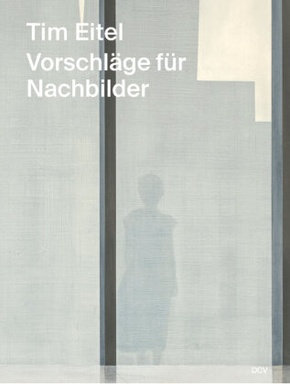Tim Eitel - Vorschläge für Nachbilder 2015-2024
| Verlag | DCV Dr. Cantzsche |
| Auflage | 2024 |
| Seiten | 112 |
| Format | 24,5 x 1,3 x 33,0 cm |
| Gewicht | 773 g |
| ISBN-10 | 3969122112 |
| ISBN-13 | 9783969122112 |
| Bestell-Nr | 96912211A |
Tim Eitel vermittelt zwischen dem Gedächtnis und der Malerei. Er sagt, für ihn sei das Malen "ein Gespräch über Wirklichkeit und Erinnerung", das er mit der Leinwand führt. Im Rahmen dieses Dialogs reflektiert Eitel seine Erlebnisse und schafft darüber eine eigenständige, figürlich-abstrakte Realität, die in sich stimmig sein muss - die Leinwand hat einen starken Willen. Die auf seinen Gemälden dargestellten Szenen sind daher Analogien, Nachbilder einer Situation und eben keine Abbilder davon. Das erzeugt eine gewisse Offenheit, ermöglicht es den Betrachtenden, auch ihre eigenen Erinnerungen in den Bildraum hineinzutragen. Aus einem Dialog zwischen der Leinwand und dem Künstler wird so ein Zwiegespräch zwischen dem_der Betrachter_in und dem fertigen Bild. Dass viele von Eitels Malereien, die im vorliegenden Katalog versammelt sind, Menschen im Museum zeigen, ist daher kein Zufall, das unterstützt das Eintreten in den Bildraum. Die Betrachtenden haben eine ähnliche wie die abgebild ete Situation schon einmal erlebt oder erleben sie gerade und stehen damit bereits mitten im Gemälde; sie werden ein Teil der Malerei, und das Bild wird zum Partikel ihrer Erinnerung.
Tim Eitel initiates an exchange between recollection and painting. The work on his pictures, he says, is "a conversation about reality and memory" in which he engages the canvas. In the course of this dialogue, Eitel reflects on personal experiences, creating a standalone figural-abstract reality that needs to be internally consistent-the canvas has a strong will of its own. That makes the scenes depicted in his paintings analogues or afterimages of a situation rather than renditions of it. They are characterized by a certain openness that enables the beholders to inject their own recollections into the pictorial space as well. The dialogue between canvas and artist thus gives way to a colloquy between audience and finished work. Not by coincidence, many of the paintings by Eitel gathered in this catalog show people in museums: these scenes facilitate the leap into the pictorial space. The beholders have experienced a situation like the one shown in the pictures in the past or are experiencing it right now, and so they are already at the heart of the works; they become part of the painting, and the picture becomes a particle of their recollection.

